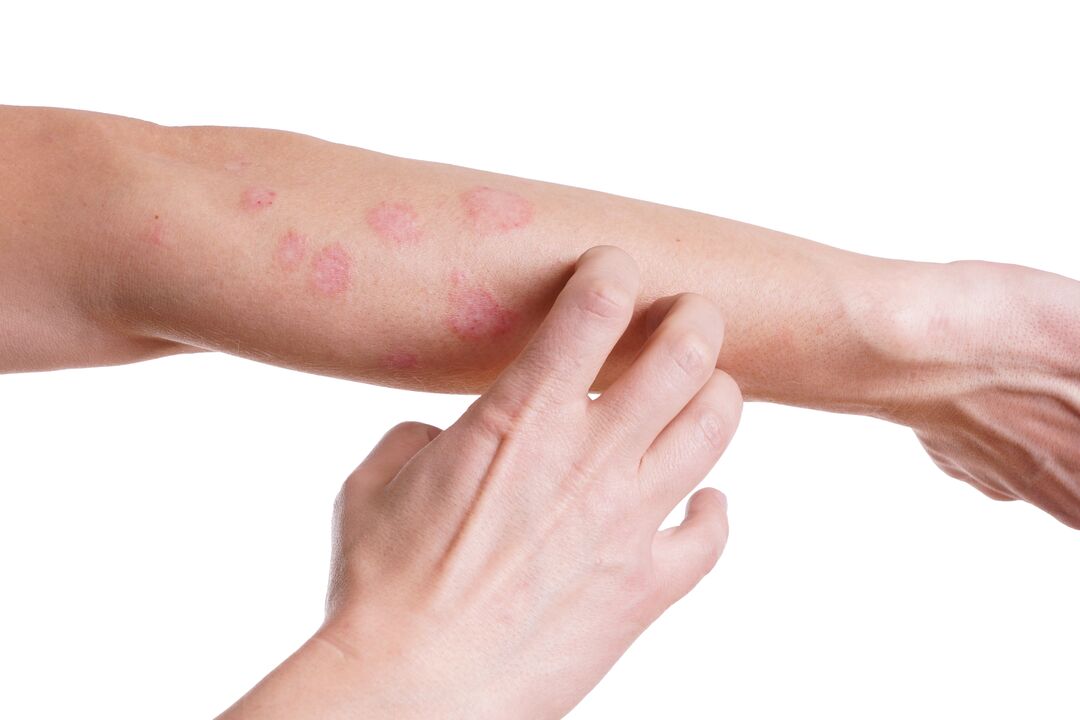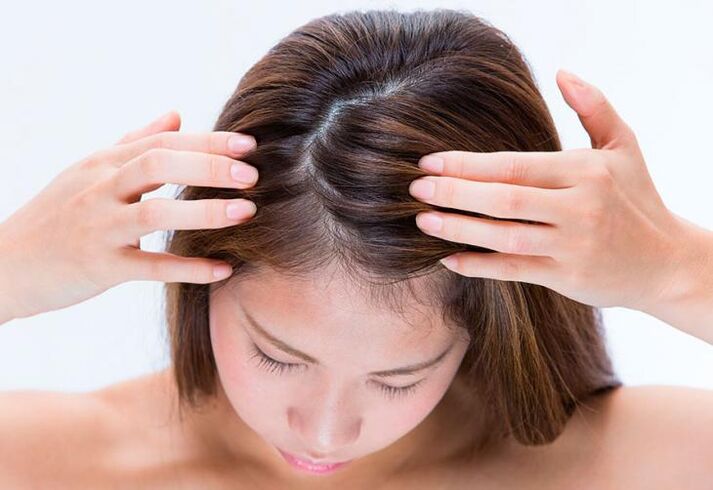Psoriasis (from the Greek "psora" - "skin disease, scab") is a chronic non -infectious disease. Scales Lichen (so they also call psoriasis) mainly affects the skin areas on the elbow and knee, on the head and in the lower back. But there is also psoriasis of nails, joints and external genitalia, but these forms are extremely rare.
The causes of psoriasis

This disease is due to a short life cycle. The fact is that in a healthy person, skin cells are updated every 30 days, that is, the cycle of their division and maturation occurs in about 4 weeks. Psoriasis is, one could say, an abnormal reaction of the body to various types of external stimuli, following which in some places the upper layer of the skin dies in just 4-5 days, leaving behind the keratinized areas.
To date, psoriasis is considered a multifaceted disease, that is, the disease is based on a series of reasons: immunological changes, metabolic disorders, various neurological disorders and concomitant endocrine.
The exact reasons why a person has psoriasis are not finally established. There are several theories in this sense. According to one of them, two types of psoriasis are distinguished:
- The cause of type I is inherited from the breakdown of the immune system. This form of the disease, which affects the skin, is sick by about 65% of people and very often from 18 to 25 years;
- The type of psoriasis appears in people over the age of 40, is not inherited and is not associated with violations in the cells of the immune system. Unlike the first type, the second includes psoriasis of nails and joints.
According to another theory, psoriasis occurs exclusively due to the impairment of immunity, whose causes could be infectious diseases, stress, alcoholic beverages, malnutrition, cold climate. Bravoli, pepper and food containing vinegar can cause exacerbation and worsen psoriasis. Psoriasis, according to this theory, is a systemic disease. And this means that with a seriously compromised immune system, the process can spread from the skin to other tissues and organs, for example to the joints, due to which psoriatic arthritis develops.
Symptoms of psoriasis
The symptoms of the scalp psoriasis, the knees, the joints of the elbow and the lower back are papules peeled in red or pink. They are covered with silver stairs (hence the name "squamous lichene"), which when combed disappears easily. Over time, the spots increase in size, merge into large formations (plates) and influence the increasingly larger areas and the blemishes of the damaged skin.
Nail psoriasis manifests itself slightly differently. First of all, the nails plates are obscured, the peak spots and recesses appear on them. Very often with psoriasis, nails thicken and crumble.
The symptom of psoriasis in the form of rashes is accompanied by severe itching, especially in papules, but applies to nearby areas.
Depending on the seasonality of exacerbation, three types of psoriasis are distinguished: summer, winter and uncertain. Very often there is a winter type: its symptoms under the influence of sunlight are weakened and sometimes disappear completely. In patients with a summer form, on the contrary, the course of the disease worsens under the influence of the sun.
Treatment of psoriasis
The treatment of psoriasis, depending on its type, is carried out by various drugs and methods. In any case, the therapy should be complex.
The pharmacological treatment of psoriasis in the progressive phase usually includes:
- Antihistamine;
- Idiebibbining medicines;
- Vitamins A, C, B6, B12;
- Sedatives;
- External funds.
In the stationary phase of psoriasis, autoemotherapy (method of treatment with one's own blood), anti -fagin or anotoxin injections are shown (in the presence of chronic infection outbreaks), as well as ultraviolet irradiation. For external use, Ichthyol is prescribed, sulfuric ointment with tar, as well as NAFTANANO with the addition of corticosteroids.
Quite often, the psoriasis of the scalp and skin of other parts of the body is treated with a laser. Lazer rays activate living tissue molecules, providing photo-mechanical, photochemical and other effects.

For the treatment of serious forms of psoriasis, photographic chemotherapy is used, which implies the effect on the skin of long wave UV rays and the use of special drugs. Thanks to photochemotherapy, you can get rid of about 80% of the plates and with regular use - about 95%. In a serious course of the disease, the intake of corticosteroid hormones and immunosuppressants cytotoxic hormones is indicated.
Also for the treatment of psoriasis, radiotherapy, ultrasound, ultra -seporesis, electrotherapy, cryotherapy, magnetic waves, thalassotherapy, plasmosorption and bleeding.
All patients show a diet with a limitation of carbohydrates and animal fats, with the exception of acute dishes and alcohol. In addition, patients with psoriasis are recommended by the treatment of the resort: bathroom bathrooms, solar, radon and hydrogen sulphide.
Treatment of psoriasis with popular remedies
Popular recipes also help to get rid of the symptoms of psoriasis. However, it is worth remembering that the cause of this disorder could be a break in the immune system and a compromised immunity due to chronic diseases. For this reason, the treatment of psoriasis with popular remedies, first of all, should be agreed with the attending physician and, secondly, should only integrate the general therapy. Ignoring or improper treatment of such a serious disease is irritated by its transition to a serious form, which is characterized by damage to the joints. They will begin to inflate, lose mobility and get sick. In addition, psoriasis reduces the standard of living of a person-patient complains of the instability of the emotional and psychological state.
So, popular recipes:
- Infusion of flowers and leaves of the black elderly: 2 teaspoons. The raw materials pour 0, 5 liters of boiling water and insist for an hour. Filter the decoction, take 1/3 cup three times a day;
- Sea buckle oil: take 1 teaspoon inside. once a day;
- Ointment Mustard: 1/2 teaspoon mixture. Dry must, 5 tablespoons. Hot broth of San Giovanni, 1 teaspoon of melted butter. Put the mixture on the affected areas, after a few minutes to wash with fresh water, apply a moisturizer. Perform procedures once a week.
It is very useful for the psoriasis of a bathroom with the addition of an infusion of a series, curtains, San Giovanni, fir and sage extract.
Unfortunately, at the moment it is completely impossible to take care of psoriasis, the impact can occur at any time, so people with this diagnosis must be constantly observed by a dermatologist.
























